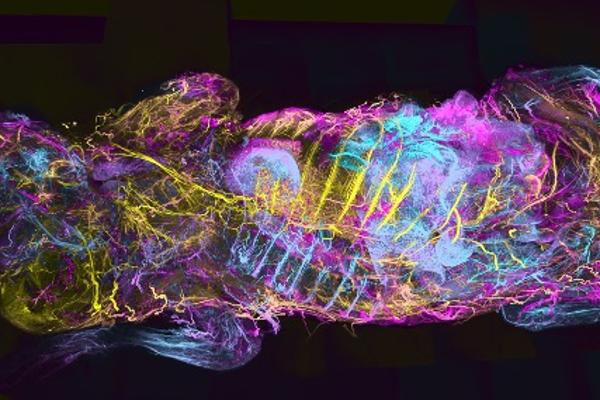In the past, scientists relied on genetically modified animals or specialized labels to make specific structures and cells of interest visible in the entire body of an animal. But these approaches are expensive and time-consuming to create, especially when it comes to body-wide systems such as the nervous system. A team based atHelmholtz Munich, LMU Klinikumand LMU led by Prof. Ali Ertürk now introduced a new method called wildDISCO, which makes use of standard antibodies to map whole bodies of mice. This ultimately enables the creation of detailed three-dimensional maps of normal and diseased structures in mammalian bodies in an easy-to-use and cost-efficient way.
In detail, the workflow of wildDISCO includes the distribution of antibodies coupled with a fluorescence tag in the whole body of a no longer living animal by perfusion of the blood vasculature followed by optical clearing of the animal and light-sheet fluorescence microscopy. The scientists detect a fluorescence signal where a specific antibody is bound to the structure, molecule, or cell of interest. Advanced computational tools create body-wide maps of all the specific locations where a molecule of interest is present throughout the body.
A crucial factor for the success of this project was finding a way to uniformly distribute a fairly large antibody homogeneously throughout every cell of an animal. Prof. Ali Ertürk and his team identified a specific compound, which enhances cell membrane permeability and facilitates deep and even penetration of standard antibodies without aggregation.
Using wildDISCO, the researchers were able to create detailed maps of cellular structures leading to entire mouse body atlases, focusing on the nervous system, lymphatic vessels, blood vessels, and immune cells. With this approach, they already discovered that the gut microbiome plays a significant role in the development of the enteric nervous system. They also mapped tumor-associated lymphoid structures (TLS) in relation to breast cancer spread which will provide insights into how these structures affect the immune response to tumors.
For further information see press release by Helmholtz Munich.

